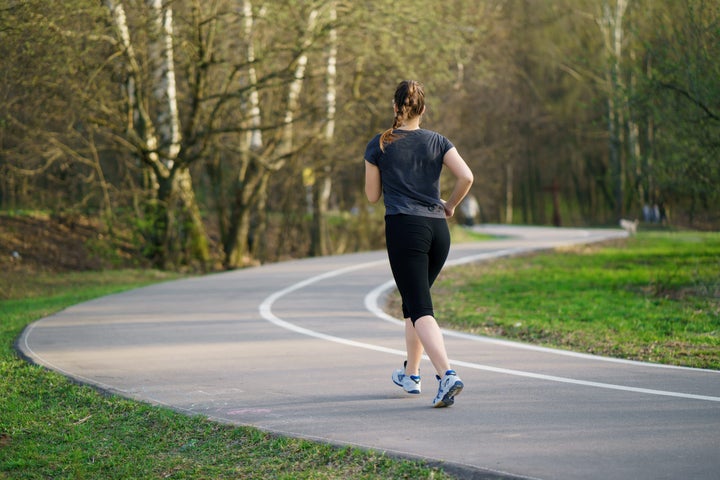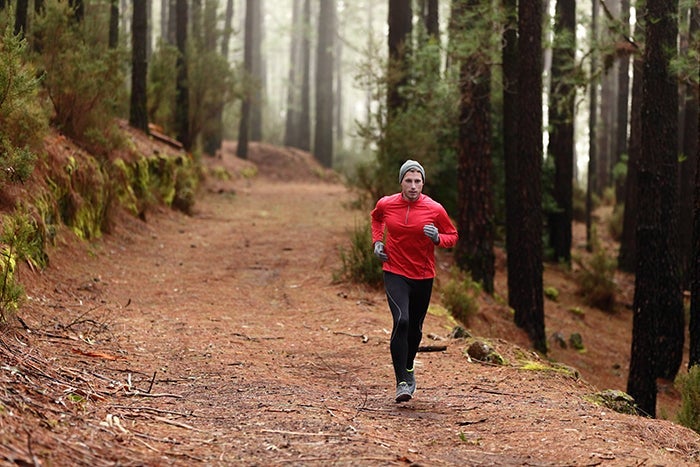For a half marathoner or marathoner, base training — also called introductory or foundational training — is the first and most important phase of a training cycle. It’s what prepares runners for the more challenging, race-specific workouts that come later.
The top goal of base training is to increase endurance, or a runner’s aerobic capacity — because endurance takes extended time to develop and the benefits are long-lasting. But that isn’t the only goal, and base training isn’t just easy miles.
How do top coaches and athletes define the base phase of training?
“Priority number one is to gradually but steadily increase your running mileage,” says Brad Hudson, coach of many elites and author of Run Faster. “Other priorities of the introductory period include establishing a foundation of neuromuscular fitness with very small doses of maximal-intensity running and beginning the long process of developing efficiency and fatigue-resistance at race pace with small doses of running in the race-pace range.”
Bob Kennedy, the former American record holder in the 5,000m, says, “I think that the phase of training is defined by what you are focusing on during that phase.” Kennedy explains, “There are three basic phases to a training cycle: base, strength and speed. The problem that most athletes have is that they think [the phases] are mutually exclusive. But you always do a little of all of those things. There’s never a time of year when you’re just running mileage or you’re just doing speed. You’re always doing all of it, it’s just a matter of to what degree.”
Any base period should include three components: Gradually increasing mileage, the critical long run, and at least one faster workout per week.

Higher Mileage is Key
Mileage, or the total volume of a runner’s workload, is one of the best metrics for success. Simply put, the more you’re able to run, the faster you’re likely to race.
To build a strong aerobic engine, gradually increasing mileage during the base phase of training is necessary. This is why base training has to start months before any goal races.
Focus on three metrics:
- Increasing the long run by about a mile every 1–2 weeks
- Adding 1–2 more runs per week
- Adding 1–3 miles to weekday runs every 1–3 weeks
The end result should be a gradual, progressive increase in mileage that will help build endurance, injury resistance and economy. If you stay consistent, you’ll develop the strength you need to handle the miles by doing the miles—so that after a few months of gradual increases what used to be a peak week becomes your comfortable, default mileage.
Run Long to Build Fitness
The almighty long run has become nearly synonymous with endurance. To increase stamina, increase the distance of the long run.
Why? The benefits are clear:
- Denser mitochondria (the “energy factories” of your cells)
- Denser capillary networks to deliver oxygenated blood
- Mental toughness and resolve
- Improved muscular strength
- Enhanced running economy (efficiency)
- More energy efficient
- You’ll race faster!
No base phase is complete without long runs. No matter if you’re a miler or ultramarathoner, a veteran or a total beginner, the long run is an absolutely critical component to successful training. The majority of benefits really begin to kick in when your long run lasts between 90 minutes and 3.5 hours.
Keep the pace of long runs mostly easy and add about a mile every 1–2 weeks. But every 4–5 weeks, it’s wise to cut the distance back to ensure you’re recovering and not increasing your risk of running injuries.

Faster Workouts
It’s a common misconception that base training doesn’t include fast workouts. While they’re not the focus, they’re still included to maintain leg speed and neuromuscular fitness (the ability for your brain to communicate effectively with your muscles).
While strides or hill sprints are valuable ingredients in the base phase (and any phase of training!), there are other workouts that will help increase your fitness and overall endurance.
Progression runs where you gradually speed up to about tempo pace at the end of the run is a valuable early-season workout.
Tempo sessions improve your body’s tolerance to and ability to buffer lactate (the byproduct of anaerobic cellular respiration). In other words, you can hold a faster pace for longer.
Fartlek workouts include pickups or surges of a few minutes with 1–3 minutes recovery. These are usually faster than the other two workouts mentioned, so use them only every 2–3 weeks during base training.
What you want to avoid doing too much of during this phase are extended workouts at V02 Max (roughly 5K pace) or faster, such as 400m to mile repeats. These anaerobic workouts raise the acidy of cells, which can damage the mitochondria and aerobic enzymes you’re working to build. Save most of these intense, specific workouts for the final phase of training when you’re sharpening for a race. You can do a moderate interval workout once every 3–6 weeks during your base to keep your body in touch with these paces and systems.
Without including faster sessions into base training, runners won’t develop nearly as much neuromuscular fitness, improvements to running economy, and preparedness for the harder and more race-specific workouts that are undoubtedly coming during the later stages of training.
When you combine higher mileage, increasing long runs, and smart workout progressions you’ll build a monster aerobic base that will propel you to new personal bests.
—
Jason Fitzgerald is the head coach at Strength Running. He is a 2:39 marathoner, USATF-certified coach and his passion is helping runners set monster personal bests. Follow him on Twitter @JasonFitz1 and Facebook. This article is adapted from one originally published August 2016.


